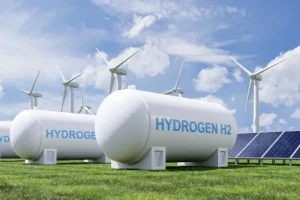As many as 55 airports in India have now started using 100% green energy to run their operations as part of the Narendra Modi government’s policy to fight climate change, MoS for Civil Aviation Gen. VK Singh informed the Lok Sabha today.
Airports Authority of India (AAI) has taken the lead in this regard with 49 of these green airports being run by the government-owned organisation.
The Ministry of Civil Aviation (MoCA) is committed to achieving Sustainable Aviation in collaboration with the International Civil Aviation Organization (ICAO), following the principles and provisions of the United Nations Framework Convention on Climate Change, the minister stated in a written reply to a question.
MoCA strives to achieve the same under the National Civil Aviation Policy 2016, which aims to limit CO2 emissions in Indian aviation. The Government has implemented several measures to reduce aviation emissions and their impact on environment.
Airport operators and developers have also been advised by MoCA to strive for carbon neutrality and net-zero emissions and to adopt carbon mitigation measures and develop carbon management plans, the minister explained.
Chennai, Mumbai, Delhi, Hyderabad and Kochi airports are among those in the country’s 100% green energy list.
Airports have implemented various practices to reduce their carbon footprint, such as utilizing renewable energy, optimizing operational procedures and schedules and incorporating alternative fuels in ground handling vehicles, he added.
DGCA has also issued the Civil Aviation Requirement (CAR) which outlines the general procedures and practices that stakeholders including airlines and airports should follow to minimize aviation emissions and their impact on climate change.
The airlines, too, have implemented measures to reduce their carbon footprint, such as reducing aircraft weight, preventing moisture and dirt accumulation on aircraft, and optimizing speed and flap management.
Besides AI, in consultation with the Indian Air Force, has optimized airspace utilization through the Flexible Use of Airspace (FUA) initiative, which has resulted in a reduction of CO2 emissions.
AAI has introduced initiatives to reduce the use of energy intensive equipment in existing and upcoming airport projects. They have published Energy Intensity Data and created a training module for Air Traffic Controllers to raise awareness about carbon neutrality as part of their induction training program.
AAI and other private airport operators targeted a capital outlay of approximately Rs. 98,000 crore in the airport sector during 2019-2024 for construction of Greenfield Airports and new terminals, expansion and modernisation of existing terminals and strengthening of runways, among other activities as part of the rapid development of the aviation sector that has taken place, the minister stated.
There is also a systematic safety oversight process in place for monitoring the compliance of Rules and Civil Aviation Requirements by the airlines.
This is a continuous process and includes surveillances, spot checks and regulatory audits embodied in Annual Surveillance Plan of Directorate General of Civil Aviation (DGCA). The findings of safety oversight exercises are communicated to the concerned operator for compliance and the observations are closed only after due verification. The compliance of the action taken by the operator is verified during the next audit/ surveillance. In case of any violations/ non-compliance to regulations detected during audit/ surveillance, enforcement action including financial penalty is imposed by the DGCA, the minister added.




















